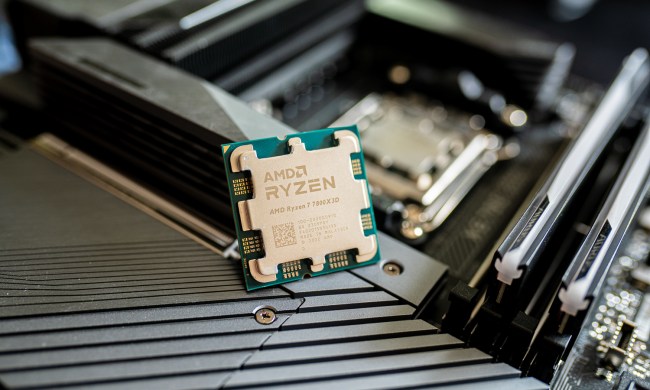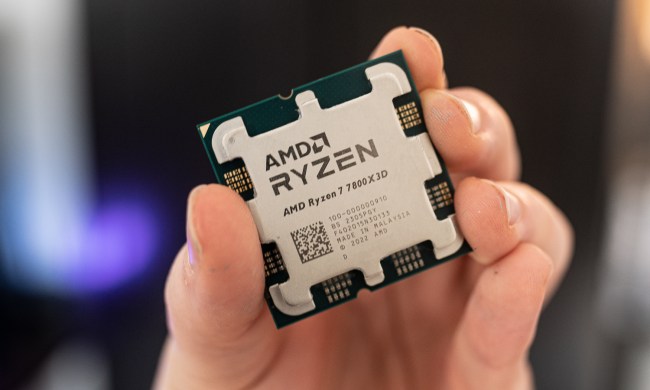This story is part of our continuing coverage of CES 2020, including tech and gadgets from the showroom floor.
The Intel versus AMD horse race is always one of the biggest narratives of CES. With back-to-back press releases and a bevvy of new announcements from both companies, this year was no different.
We’ve known for some time that AMD would have some exciting new hardware at CES 2020, and we weren’t disappointed. With new laptop CPUs, the fastest workstation processor ever made, and a new midrange GPU, there was plenty to be excited about during team red’s keynote address to start the show off. The buzz in the room was palpable.
But just a couple of hours later, Intel delivered its tepid response. Its new CPUs were merely teased, its new GPU shown in a whistlestop demonstration with no detail, and no news of next-gen desktop hardware. This does not bode well for a return to form for team blue in 2020.
AMD’s unrelenting momentum

2019 was supposed to be a monumental year for Intel. It was going to be the year Intel finally moved to its 10nm architecture after years of delays, starting first with its Ice Lake mobile processors. But with supply problems for both 10nm and 14nm parts, and no sign of anything resembling 10nm on desktop, Intel seemed behind the curve at every turn. CES 2020 was a real reflection of that.
This was a surprise though, as Intel does have some exciting technologies in the works. Before CES, there was talk of Comet Lake desktop chip reveals with 5GHz+ frequencies, of Xe graphics that could compete with AMD and Nvidia, and talk of a new cooling system which could bring greater performance to laptops than ever before. There was even a hint of laptop CPUs that could reach 5GHz or more as well, which would be a new out-the-box record for any CPU manufacturer.
But little of that materialized in Intel’s press conference.
It showed off Tiger Lake, its post-Ice Lake chip design that’s coming later this year with Xe graphics on board. But the focus was on thin and light devices, which hardly pushes the performance envelope, or excites those concerned at the loss of Intel’s various power crowns over the past couple of years. Wi-Fi 6 and Thunderbolt 4 are welcome additions, but they’re not revolutionary advancements and won’t make a huge difference to the average person.

New form factors like foldable notebooks are intriguing, and it’s always good to hear about new Athena certified laptops that can offer exceptional battery life and instant-on performance. A.I. enhancements are important too, but these are all areas where Intel has continued to excel. When AMD challenged Intel with its advancements in desktop, mobile, HEDT, and graphics, Intel didn’t give much of a response. The lack of anything monumental at CES makes it feel as if it doesn’t have one.
According to the conversations we’ve had with Intel, it’s still confident in its market positioning. As well it should be, in some respects, as Intel still controls the majority of the CPU market in servers, mainstream desktops and laptops, and the HEDT sector. But that won’t hold forever. If AMD continues to excite buyers and investors with new technologies that push the envelope in terms of raw, per core performance, and in the numbers of cores and threads its chips can support, that market and mindshare might slowly start to slip away from Intel.
Compare that with AMD’s launch of the RX 5600 XT, the Threadripper 3990X, and its Ryzen 4000 laptop CPUs all in a one-hour press conference, and it’s easy to see why team red drew more than just attention at the show. It drew serious interest. That’s been followed up by further teases of the fabled “Nvidia Killer” Navi graphics card and Zen 3 CPUs later this year.
Intel’s comeback press-conference was a damp squib in comparison.
Cashing in big bets
Something that AMD’s CEO Lisa Su has repeatedly said during press conferences over the past couple of years, is that AMD made a big bet with Ryzen more than five years ago. That bet has certainly paid off for AMD, as it surges in multiple industries in the wake of swift advancements in technology and performance. That appears to have caught Intel off guard, forcing it into a reactionary position that is only worsened by developmental delays with its own 10nm (and below) process.
That may mean Intel will spend a few more years scrambling to catch up as its own big bets to counter Ryzen take time to pay off. Xe is no doubt such a bet and if it truly can offer double the performance of Ice Lake’s 11th generation, it could be the most exciting laptop graphics advancement we’ve seen in some time. It has the potential to invalidate a lot of entry-level gaming GPUs and if it does arrive in 2020 with Tiger Lake, that could be a big win for Intel this year.
But it could be the only one, and it barely made an appearance at CES. With nothing much else to excite outside of niche technologies and some limited promises for new tech later this year, 2020 is not off to a slow start for team blue. With AMD set to introduce its most competitive products yet in two industries very important to Intel — laptops and HEDT — AMD’s momentum is snowballing, and Intel’s announcements at CES haven’t helped slow it down.
Follow our live blog for more CES news and announcements.




